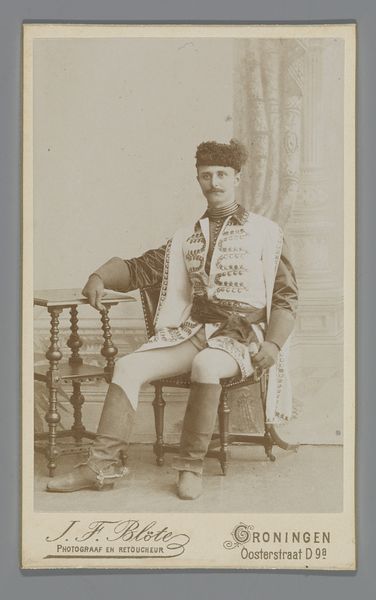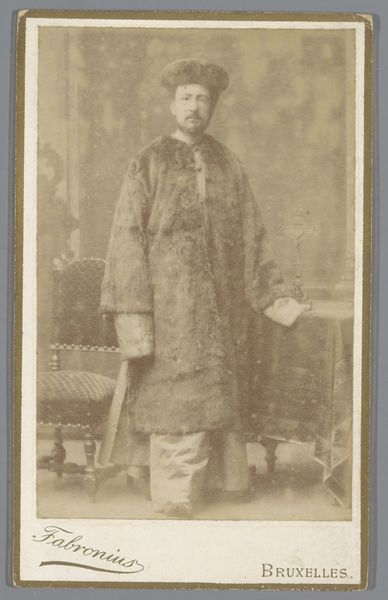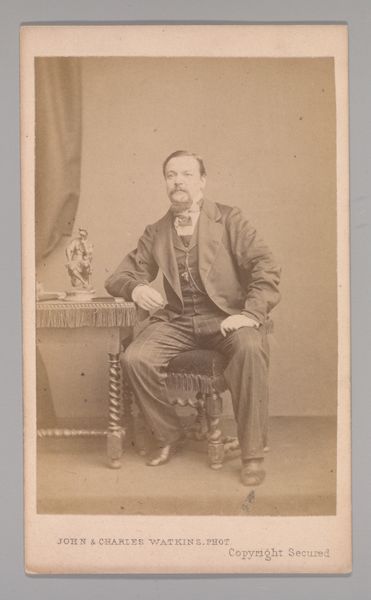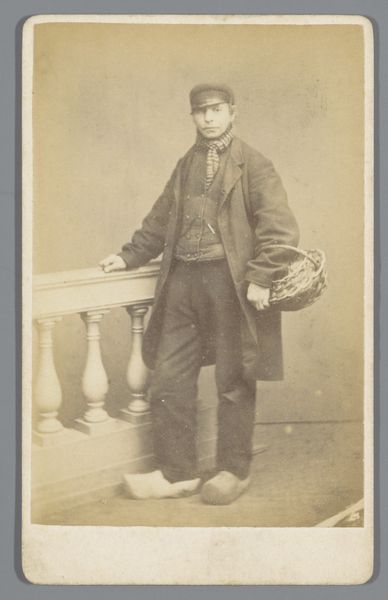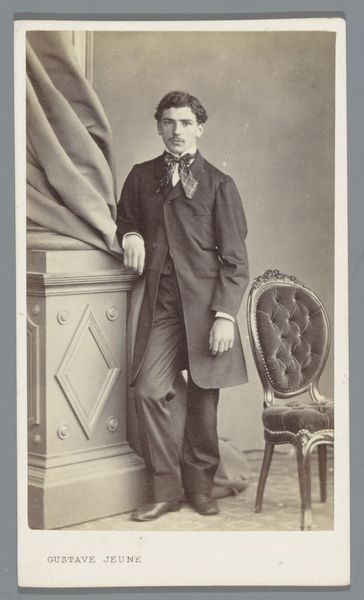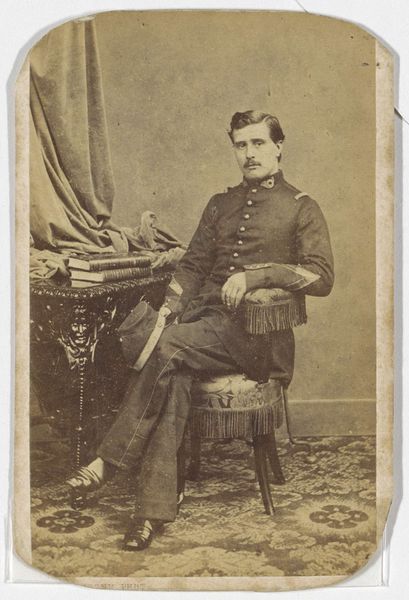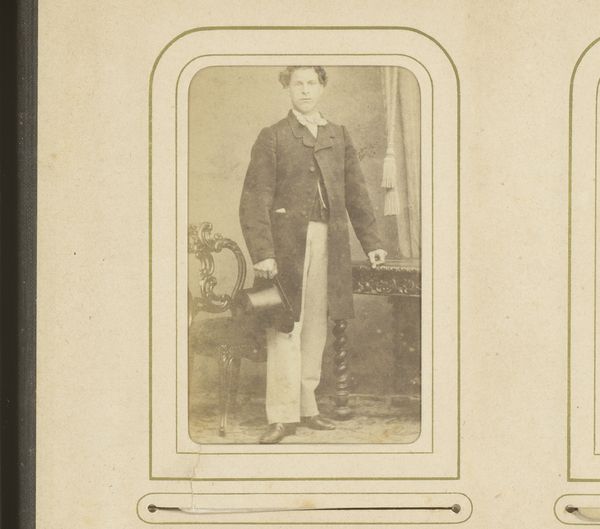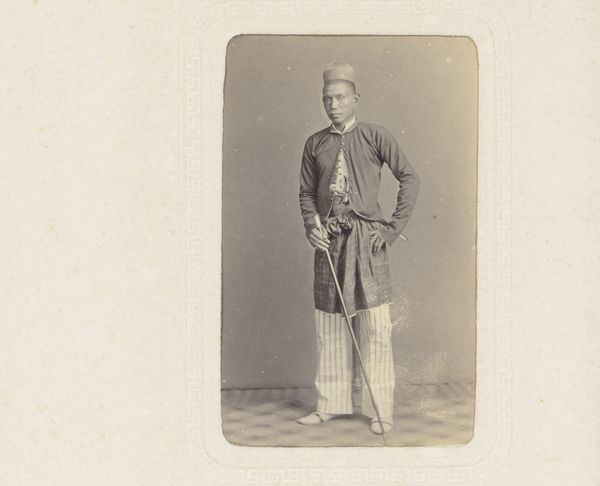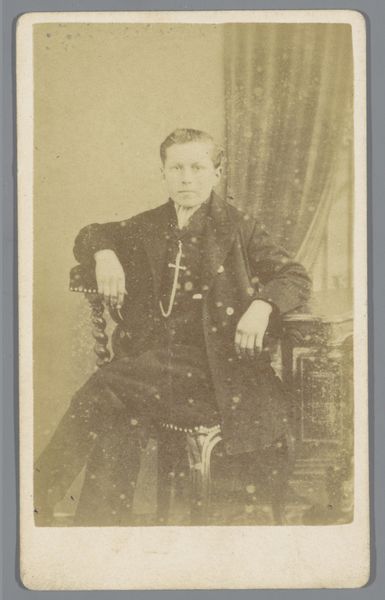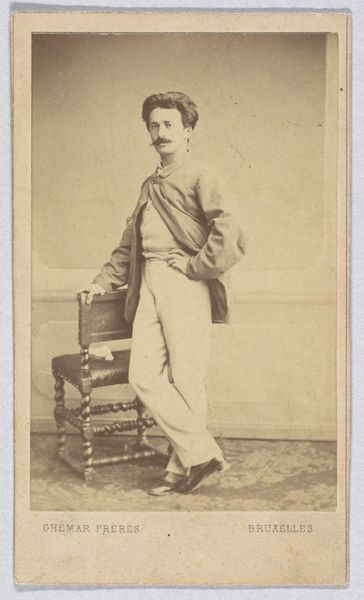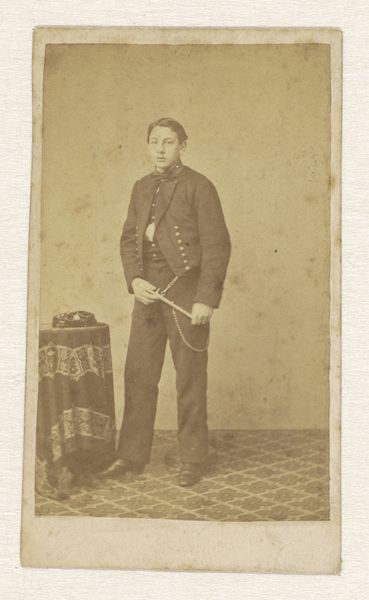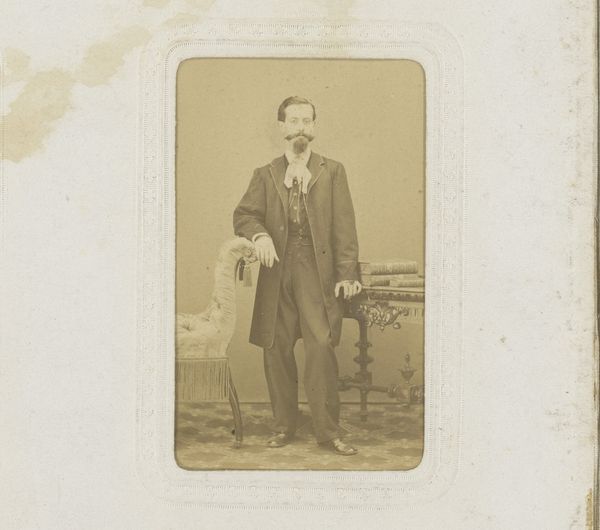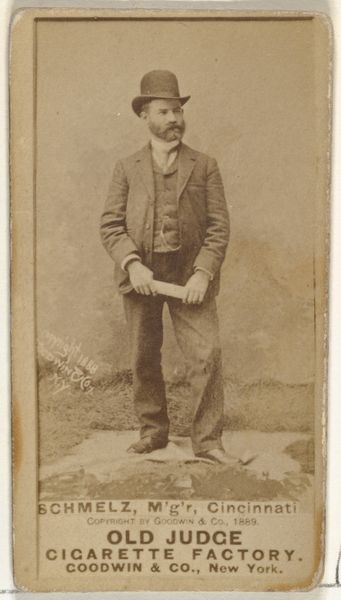
Dimensions: height 166 mm, width 107 mm
Copyright: Rijks Museum: Open Domain
Editor: This albumen print, dating from around 1870 to 1900, is entitled "Portret van een man in oosterse kleding," attributed to Giacomo Brogi. There's something melancholic in his eyes. How do you interpret this work? Curator: The photograph speaks volumes about the construction of identity and the power dynamics inherent in representation. It invites us to consider how notions of the "Orient" were manufactured and consumed during this period, perpetuating certain stereotypes. Notice how the sitter, though potentially local, is presented as "exotic," highlighting the "otherness" constructed by a Western gaze. To whom do you think this image was catered, and what stories did it help to cement? Editor: I imagine it would appeal to Europeans back home interested in these faraway lands and cultures. Did the person depicted actually wear such clothes? Curator: That’s the crux of it, isn’t it? The image may have been intended as an ethnographic study. However, by framing the sitter in a posed "oriental" costume, Brogi blurs the line between objective documentation and performative representation. Think of it as an early form of costuming. It encourages questions of cultural appropriation. The sitter’s actual identity and his own relationship to the garments he wears becomes occluded by Western fascination. What happens to authentic individual experience, then? Editor: I hadn't thought of it that way. It makes me see it as much more than just an old photograph. Curator: Exactly! It opens up wider considerations of power, representation, and the enduring legacy of Orientalism. Seeing such pieces makes me reflect on whose stories we're prioritizing in cultural spaces and which histories get suppressed. Editor: I appreciate you pointing that out, I will not perceive this artwork the same way.
Comments
No comments
Be the first to comment and join the conversation on the ultimate creative platform.
